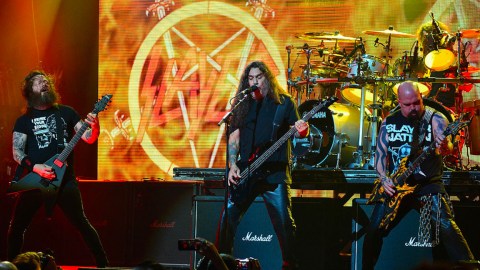Want to Teach the Difference Between Correlation and Causality? Use Heavy Metal.

Any topic can be used to teach rational thinking, even something as loud and bombastic as heavy metal music.
Rodney M. Schmaltz, a psychologist at Edmonton’s MacEwan University, writes in the journal Frontiers in Psychology“there are many useful resources from this area of popular culture that can help promote scientific thinking in the classroom.” As an example, Schmaltz points to controversies surrounding bands such as Slayer, Judas Priest and Mayhem, each having been accused over the past 30 years of instigating violence through their music. Teachers can design a lesson around an investigation of these claims and, by proxy, instill in students an awareness of correlation versus causality.
To make something like heavy metal a teaching tool, Schmaltz cites the methods of Robert Cialdini, an expert on influence and persuasion who champions the use of mystery to goad students into thinking like scientists. “Cialadini argued that instructors should frame a lecture in the same way a mystery writer frames a novel,” writes Schmaltz, “by posing a puzzle and providing the information for the reader—or in this case, the student—to solve it.”
The lesson is a detective story with a class full of Sherlocks tasked with reasoning a solution to the mystery: “Can music lead people to commit harmful acts?” Schmaltz provides a bevy of new stories and scientific sources to serve as clues for the student investigators. He encourages teachers to divvy out useful information piece by piece. Students will gradually learn to understand the concepts and thought processes necessary to reach the accepted scientific conclusion: Heavy metal and violent behavior have a correlational relationship, not causal. Arguments that run counter to this conclusion tend to rely on fallacious reasoning.
All teachers should strive to instill in their students the ability to incorporate reason into their daily thinking, as well as to clearly communicate their conclusions. The trick is to frame the lesson around an intriguing and/or unexpected topic. This communicates that rational thought has as much a home in cultural criticism as it does in the science classroom.
Too often, the lessons learned in a lab remain in the lab because students have no context for transferring the skills into real life. That’s why Schmaltz’ idea about teaching heavy metal mysteries could be so effective. You can substitute punk rock or hip hop just as easily and achieve the same results: a real-world application of smart classroom thinking.
Source: Metal Injection
Photo: Frazer Harrison/Getty Images
**
Robert Montenegro is a writer and dramaturg who regularly contributes to Big Think and Crooked Scoreboard. He lives in Washington DC and is a graduate of Loyola Marymount University in Los Angeles.
Twitter: @Monteneggroll. Website: robertmontenegro.com.




